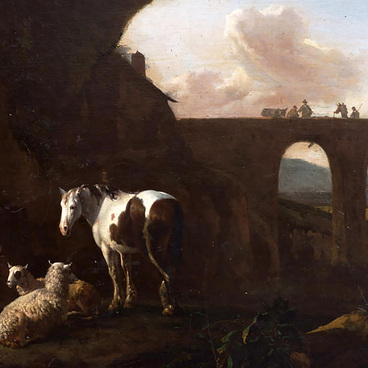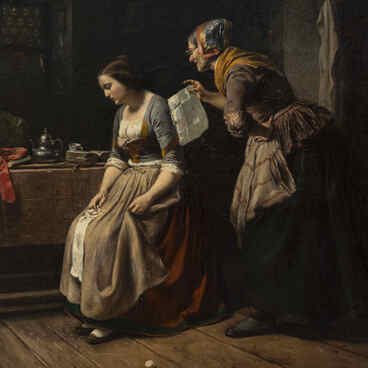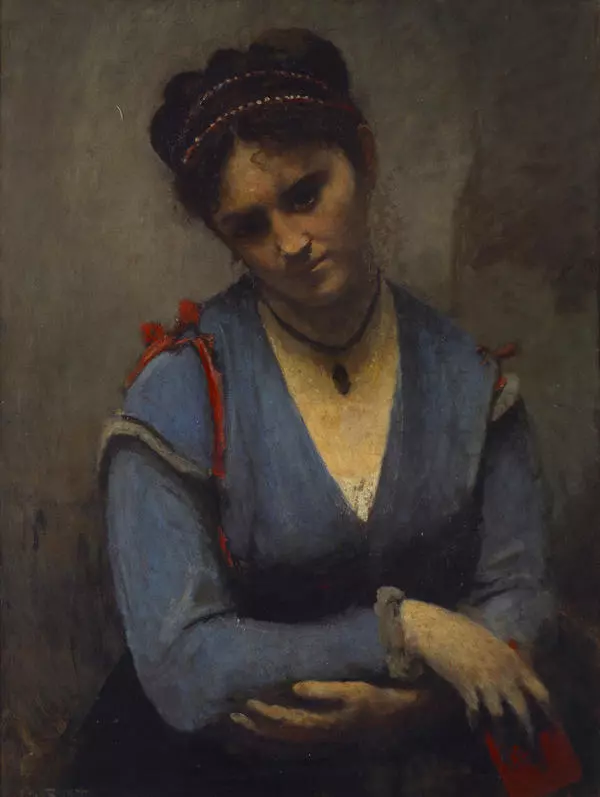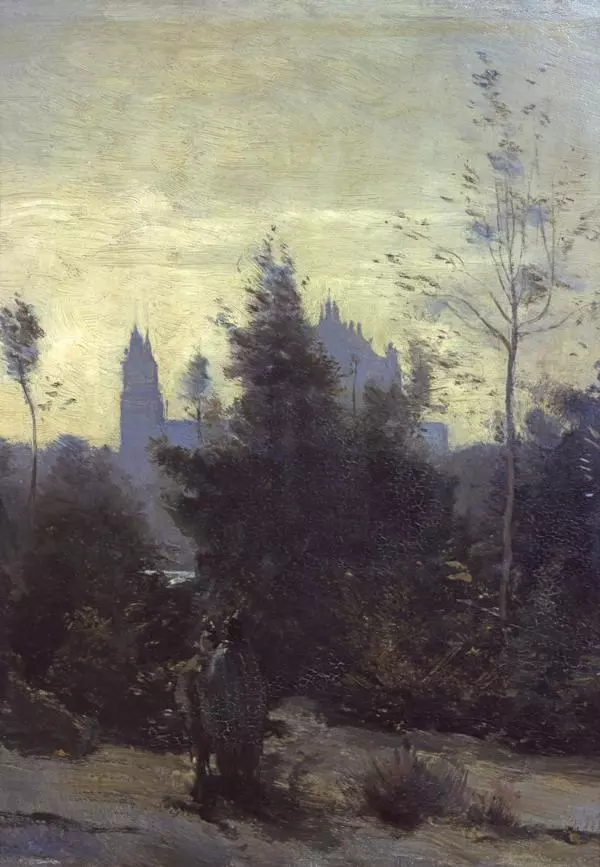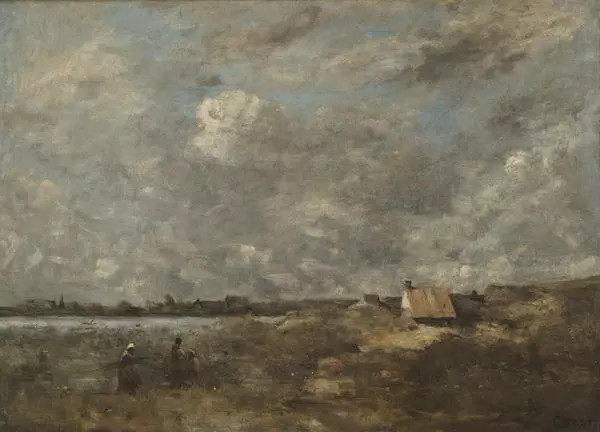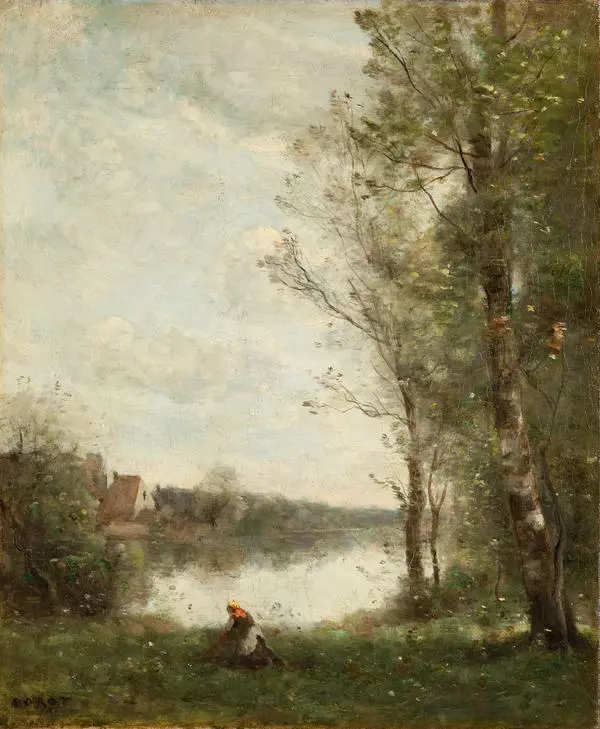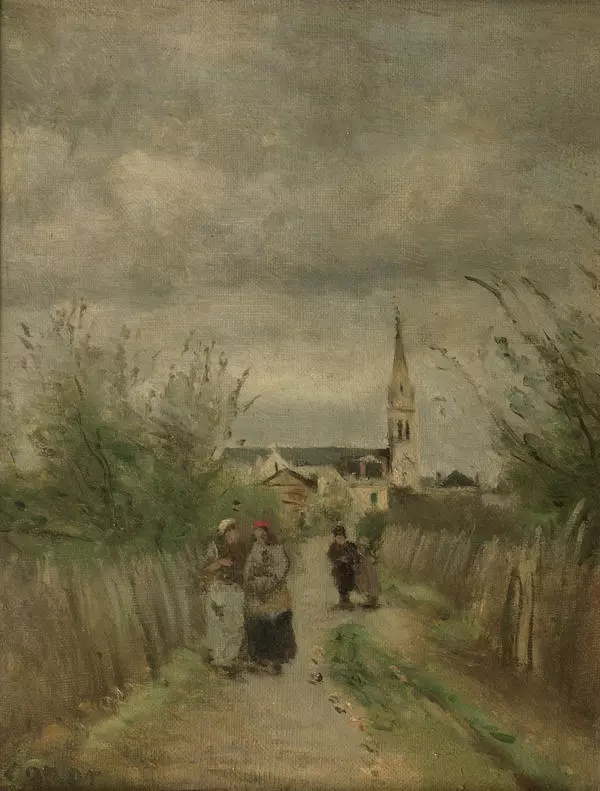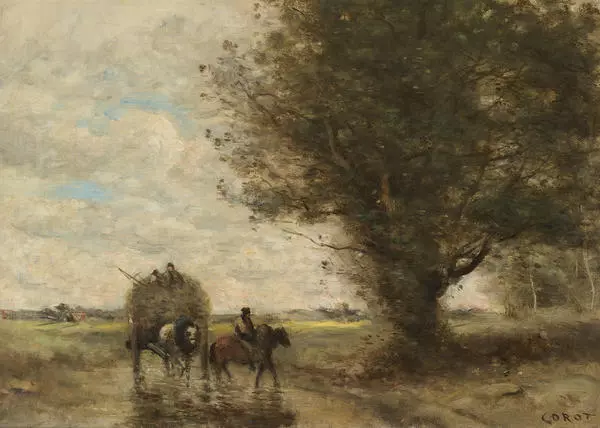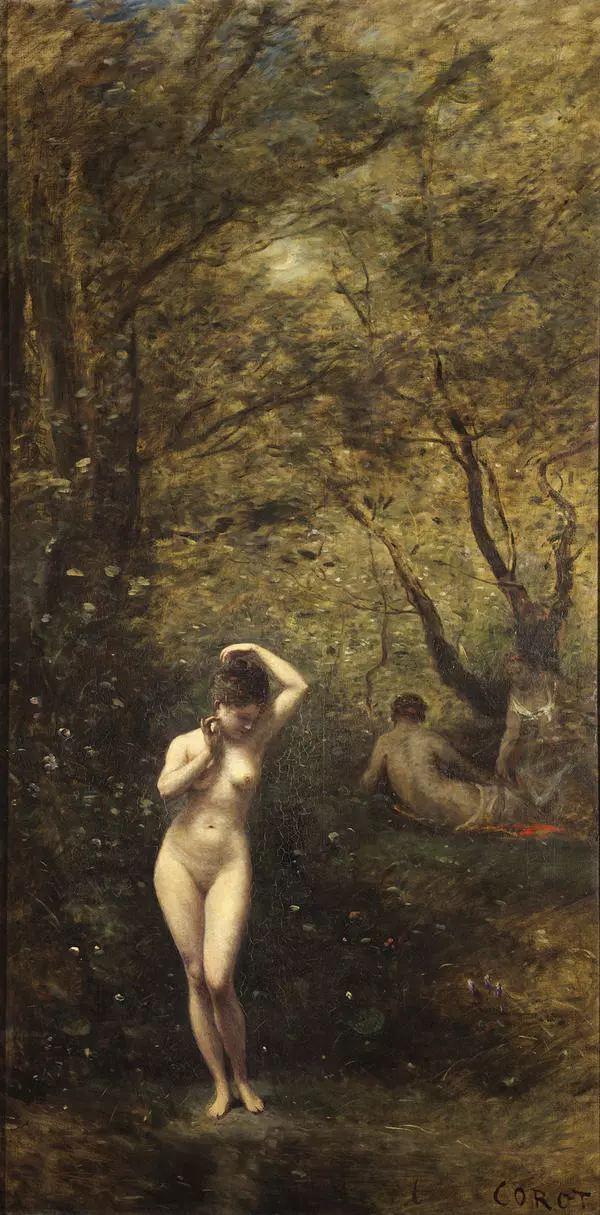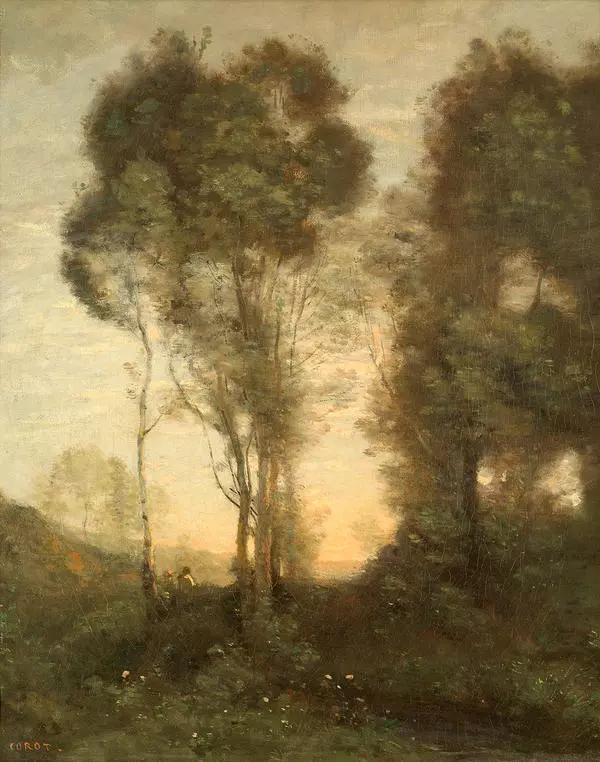The classic of French landscape painting, Camille Corot was born into a family of Parisian merchants. Despite his father’s efforts, Camille had little understanding of finance and was attracted to art. As a result, his father assigned him a solid rent income and gave him his blessing to practice painting. Corot began to study intensively under academic masters.
The young artist was greatly influenced by his trip to Italy, where he began to paint numerous landscapes in a distinctive manner. He would not return to the piece if his inspiration and ‘original color’ disappeared.
Corot traveled around Europe for several years, perfecting his skills. He turned to the realism of his homeland nature and followed the tonalism painting technique, interested in the nuances of a single color rather than in color contrasts.
The artist developed his own system in which each tone had a number. All he had to do was to paint a sketch in plein air marking out the color spots in order to complete it in the studio, guided by the numbers. At the same time Corot was a perfectionist. In each sketch, he tried to convey exactly what he saw and therefore repainted the work again and again, striving for perfect accuracy.
The hilly views of Ville d’Avré are recognizable in many of Corot’s paintings. A frequent motif in his landscapes includes a pond and trees against the backdrop of a hillside under a high, cloudy sky. Tranquil and idyllic nature reigns in these scenes of almost invariable gentle gray-green-blue palette. The “Landscape with a River” is one of these works.
Two-thirds of the painting is the sky. High and clear-blue, it gets gradually covered with clouds from above. Closer to the horizon, with its line formed by the hills wrapped in a misty haze, the gray and white clouds merge with the sky in a single pale blue scheme. Almost all of the lower part of the work is taken up by the river. Its glossy, smooth surface with scatterings of light flowers, shadows and reflections, its color echoing the color of the sky — all these details add up to the overall image of what critics describe as “the poetry of water”.
Corot’s landscapes always feature human figures. In this work, the artist depicts a male figure in a little punt, seeking the shore. The fisherman or boatman, shown in many of his works, is always dressed in a white shirt, dark pants, with a brick-colored beret on his head. This is also the case in “Landscape with a River”: the fisherman is pulling the net, his boat is leaning against the shore, where two cows are grazing, lagging behind the herd.
The artist was often referred to as the forerunner of the Impressionists for his distinctive “mood landscapes”. Corot was also known as an engraver and prolific portraitist.
The young artist was greatly influenced by his trip to Italy, where he began to paint numerous landscapes in a distinctive manner. He would not return to the piece if his inspiration and ‘original color’ disappeared.
Corot traveled around Europe for several years, perfecting his skills. He turned to the realism of his homeland nature and followed the tonalism painting technique, interested in the nuances of a single color rather than in color contrasts.
The artist developed his own system in which each tone had a number. All he had to do was to paint a sketch in plein air marking out the color spots in order to complete it in the studio, guided by the numbers. At the same time Corot was a perfectionist. In each sketch, he tried to convey exactly what he saw and therefore repainted the work again and again, striving for perfect accuracy.
The hilly views of Ville d’Avré are recognizable in many of Corot’s paintings. A frequent motif in his landscapes includes a pond and trees against the backdrop of a hillside under a high, cloudy sky. Tranquil and idyllic nature reigns in these scenes of almost invariable gentle gray-green-blue palette. The “Landscape with a River” is one of these works.
Two-thirds of the painting is the sky. High and clear-blue, it gets gradually covered with clouds from above. Closer to the horizon, with its line formed by the hills wrapped in a misty haze, the gray and white clouds merge with the sky in a single pale blue scheme. Almost all of the lower part of the work is taken up by the river. Its glossy, smooth surface with scatterings of light flowers, shadows and reflections, its color echoing the color of the sky — all these details add up to the overall image of what critics describe as “the poetry of water”.
Corot’s landscapes always feature human figures. In this work, the artist depicts a male figure in a little punt, seeking the shore. The fisherman or boatman, shown in many of his works, is always dressed in a white shirt, dark pants, with a brick-colored beret on his head. This is also the case in “Landscape with a River”: the fisherman is pulling the net, his boat is leaning against the shore, where two cows are grazing, lagging behind the herd.
The artist was often referred to as the forerunner of the Impressionists for his distinctive “mood landscapes”. Corot was also known as an engraver and prolific portraitist.


